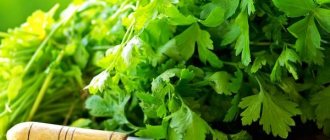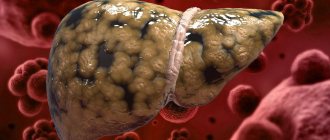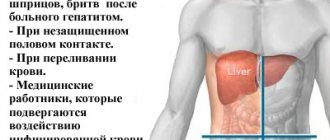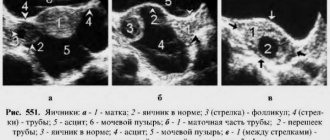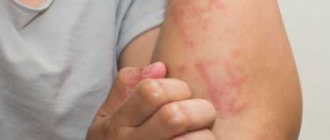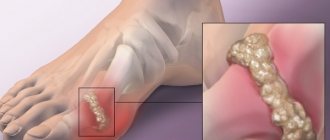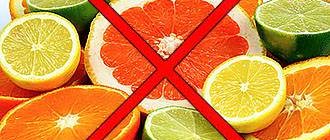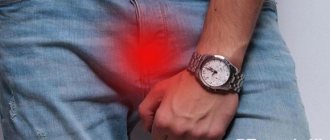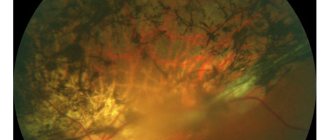Pathologies of the gastrointestinal tract sharply worsen the patient’s quality of life. Fatty liver in humans is a metabolic disease caused by external and internal factors. Multifactoriality does not allow us to identify specific preconditions for this disease. The causes of fatty liver relate to endocrinological, nutritional, infectious and hereditary aspects. Symptoms of the disease increase slowly, but lead to disappointing prognoses. It is detected in late stages, when only symptomatic treatment is possible to support body functions.
Fatty liver degeneration most often affects women. 70% of females and only 30% of males have to struggle with it.
Causes of the disease
People with alcohol addiction, as well as people with nutritional obesity, are susceptible to fatty infiltration. Ethanol (a derivative of ethyl alcohol) that enters the body is broken down, causing dystrophic changes in hepatocytes. The cells shrink and gradually die. In their place, an infiltrate in the form of adipose tissue is formed, as well as a scar made of connective tissue fibers. In a woman’s body, pathological processes occur several times faster due to unstable hormonal levels.
When you abuse food, the same thing happens, only the organ is negatively affected by toxins, fats, proteins and allergens contained in the products. Hepatologists identify several other causes of fatty liver:
hereditary factor (most often associated with disorders of the metabolic functions of the gastrointestinal tract and gallbladder);- cholesterolemia (the result of nutritional obesity);
- long-term hormone therapy (perceived as drug dependence);
- chronic insufficiency of the digestive organs of acquired form;
- protein-free diets;
- fasting for weight loss;
- history of gastrointestinal surgery;
- hyperlipidemia and metabolic syndrome (found in non-insulin-dependent diabetics);
- poisoning by toxins;
- eating excessively spicy foods;
- long-term antibiotic therapy;
- poor nutrition;
- hormonal imbalance.
Nutrition for fatty liver
If you have this type of disease, eating everything is prohibited, so there are a number of foods recommended for consumption and those that should be limited.
Allowed:
- poached or soft-boiled eggs;
- parsley and dill;
- borscht, cabbage soup, vegetables, cereals, milk soup and vegetable broth with noodles;
- rosehip infusion, bran, medium-strength tea, vegetable juice and still water;
- low-fat sour cream;
- vegetable, sour cream and milk sauce;
- berries and fruits of non-acidic composition;
- low fat dairy products;
- rabbit, chicken, veal and beef without fatty areas;
- jam, honey and marmalade;
- zucchini caviar.
Forbidden:
- alcoholic drinks;
- fried and hard-boiled eggs;
- onions, garlic, spinach, radish, radishes, sorrel;
- chocolate, cocoa and black coffee;
- fatty broths;
- legumes;
- cream and full fat milk;
- sausages, canned food, smoked meats and fatty meats;
- salo;
- cakes, muffins, pastries, fried pies;
- mayonnaise, ketchup, mustard, horseradish and various sauces.
Recommendations:
- food should alternate between cereal and protein dishes;
- sugar should be replaced with xylitol;
- fried foods are strictly prohibited;
- caloric intake should be limited for men to 1,500 kcal, and for women to 1,200 kcal;
- Make dietary table No. 5 the basis of nutrition.
Eating haphazardly and everything in a row, it is impossible to get rid of fatty liver, and delaying treatment will lead to irreversible consequences.
Symptoms
Liver diseases are accompanied by an enlargement of the organ, but in the initial stages the increase is insignificant and the patient will not be able to palpate the organ on his own. The main signs of fatty liver at the initial stage are dyspeptic disorders (nausea, vomiting, lack of stool) and a feeling of bitterness in the mouth. As the disease progresses, characteristic symptoms of fatty infiltration of hepatocytes develop:
increased pain in the right hypochondrium;- severe nausea and loss of appetite;
- organ enlargement;
- bloating and flatulence;
- constipation, or vice versa, profuse diarrhea (this changes the consistency and color of stool);
- difficulty digesting food (frequent attacks of heartburn);
- increased bitterness in the mouth;
- the formation of a yellow coating on the tongue and a change in the color of the sclera of the eyes (the appearance of a jaundiced tint).
The patient suffers from irritability, insomnia, and loss of appetite. Headaches and dizziness are possible. In the absence of therapy, the color of the skin changes (yellowish tint), tremors of the limbs and increased sweating appear. The liver reaches large sizes, visible to the naked eye, the abdomen enlarges and ascites develops.
Signs in the early stages of the disease are reversible, and if the disease is identified in time and treated, the organ will gradually recover and return to performing its duties.
Prevention
It is very easy to avoid fatty liver disease. To do this, you need to lead an active lifestyle and eat healthy foods. Physical activity will not be superfluous, which will help maintain normal metabolism.
Prevention of fatty hepatosis involves timely diagnosis and treatment of endocrine diseases. If you have any negative symptoms, do not delay the examination. The sooner a pathology is detected, the easier it will be to eliminate it.
For more information about fatty liver, watch the video:
Diagnostics
It is impossible to diagnose the pathology on your own in the early stages. Fat replacement is a long-term process that manifests itself as minor metabolic disorders. Externally, patients may notice sagging skin, rashes on the face, and immune lability. This happens due to the reduced ability of the liver to neutralize toxins that are carried throughout the body through the bloodstream.
Gastroenterologists and hepatologists are involved in the diagnosis of liver pathologies. To make a diagnosis, hardware and laboratory diagnostic methods are provided. Laboratory methods include:
general blood, urine and stool tests;- determination of ESR level;
- detection of bile pigments in urine;
- biochemical study with mandatory identification of the concentration of bilirubin fractions, cholesterol, triglycerides, proteins and enzymes;
- coagulation system for assessing organ functionality;
- detection of antibodies to rubella and hepatitis;
- blood for the concentration of thyroid-stimulating hormones.
In addition to laboratory tests, highly informative methods are carried out using modern equipment:
- Ultrasound diagnostics - to assess the morphological features of the organ and establish the stage of the disease.
- MRI examination;
- Tissue biopsy of the damaged organ (the most informative analysis that allows you to identify “fatty liver” from many other liver pathologies).
- Breathing test - allows you to determine the organ’s ability to detoxify, as well as identify the percentage of damaged and healthy hepatocytes.
Only by combining several diagnostic methods is a diagnosis established, the degree of liver damage and the stage of fatty infiltration. Based on the diagnosed signs, a scheme and tactics for treating fatty liver are set. Highly sensitive diagnostic methods reveal not only the disease, but also the possible cause that led to the disease.
Basic therapy methods
- Lifestyle adjustments.
- Drug therapy.
- Dietary diet with the obligatory inclusion of a large number of fortified foods.
- Application of traditional methods.
It is more likely to be possible to get rid of the disease by using all therapeutic methods simultaneously. The patient must constantly monitor his well-being. Even with the slightest deterioration, you should immediately consult a doctor and review the treatment program.
Fatty liver can be cured only if the unfavorable factors that caused the development of the disease are eliminated. First of all, you will have to reconsider your lifestyle. In doing so, adhere to the following recommendations:
- A complete abstinence from drinking alcoholic beverages is necessary.
- Spend as much time as possible outdoors. Regular walks in a park, square, or just city streets will help boost metabolism and increase the body's protective functions.
- To get rid of the disease you need to maintain sufficient physical activity. Start every morning with gymnastics, visit the pool and gym.
- If you are overweight, you must make every effort to lose weight.
- Periodic cleansing of the liver using fasting and fasting days is effective.
The patient should strictly follow all the doctor’s recommendations. Only regular daily work on yourself and giving up bad habits will help you overcome the disease.
An effective way to treat the disease is the use of medications. The modern pharmaceutical industry offers many medications for fatty liver, which help restore normal functioning of the organ, reduce the concentration of cholesterol in the blood, and increase the body’s protective functions. The list of effective drugs includes the following groups of drugs:
- Hepatoprotectors. These include: Essentiale Forte, Essiver, Berlition and many others. This medicine allows you to restore damaged liver cells, restore the full functioning of the organ and increase protective functions. Separately, we can highlight medications that are produced on the basis of natural plant components: Gepabene, Karsil, Liv-52.
- Preparations of the sulfamic acid group. Such medications contribute to better processing of fats. This category includes Taurine and Methionine.
- Tablets that help reduce cholesterol levels in the blood. These include Atoris, Crestor, Vazilip and some others.
- Vitamins. A key role in the treatment of hepatosis is played by vitamin E (tocopherol), as well as vitamin A, which is scientifically called retinol. The drug Aevit is often recommended. From the name it is clear that its main components are vitamins A and E. But the doctor can also recommend a complete vitamin and mineral complex. The use of folic acid is also indicated.
Based on a medical examination, the attending physician selects a drug treatment program. He selects the dosage and duration of the course. It is prohibited to make any adjustments on your own.
Before using the drugs, carefully read the instructions. If any side effects occur, consult a specialist immediately.
Fatty liver can be treated at home with a special diet. The diet should remain balanced, but at the same time all harmful foods should be completely excluded from it. When preparing your diet, adhere to the following recommendations:
- The menu should contain a sufficient amount of protein foods. Eat seafood, lean meats and fish, eggs.
- Introduce grains into your diet. Rice is especially useful.
- Drink at least two liters of clean water per day. This will help flush out harmful substances from the cells. It is also customary to consume compotes, juices, and fruit drinks. They have a beneficial effect on the body's immune system.
- Meals should mainly consist of vegetables and fruits. The emphasis should be on those products that are rich in pectin and dietary fiber. An excellent choleretic effect is obtained by eating cabbage, pumpkin and carrots.
- Remove smoked, salty foods and processed foods from your diet. Steam, boil or stew all dishes. Frying is strictly prohibited.
- It is tedious to completely remove mayonnaise, sauces, sausages, pastries, pasta, carbonated drinks, fatty dairy products, and butter from the menu.
- Eat bread in limited quantities. Give preference to products made from coarse peeled flour. It is better to eat them slightly stale.
- Eating fermented milk products is beneficial, but you need to choose those that have minimal fat content.
Organize your diet so that it does not cause severe discomfort. Hunger strike is strictly prohibited. Fasting days are useful once a week. They involve giving up food in favor of clean water, low-fat kefir or apples.
Following a diet does not mean that you have to give up delicious, interesting dishes. Here are some of the simplest low-calorie dishes that will delight you:
- Boil a small slice of chicken fillet. Take a chicken egg and separate the white and yolk. Combine the whites with milk and beat with a whisk. Place the chopped fillet pieces in a baking dish and fill with whipped egg whites. Place in the oven for a few minutes. The resulting omelet will be an excellent breakfast.
- For lunch, prepare a gourmet rabbit stew. Soak a piece of meat in cold water for five minutes. After this, marinate it in a spoon of vegetable oil with the addition of salt, thyme and allspice. After two hours, cut into small pieces and simmer in a thick-bottomed pan for two hours. You can serve a little vegetable salad as a side dish for this dish.
- Steam a portion of buckwheat in boiling water. Wash the chicken carcass, rub it with salt, and brush with a small amount of vegetable oil. Stuff the chicken with steamed buckwheat. Bake in the oven for about one and a half hours.
- A baked apple is perfect for dessert. You need to remove the middle and some pulp from the fruit. Pour natural bee honey into the hole formed. Sprinkle cinnamon on top. Place in the oven. Cook until the apple softens.
Such dishes of traditional Russian cuisine will help you lose extra pounds and ease the course of the disease. The main thing is not to eat large portions. Each dish can be complemented with a glass of unsweetened tea, compote or fruit drink.
- Mix about 250 grams of unrefined whole oats with 50 grams of lingonberry leaves. Add 50 grams of birch leaves. Pour this mixture into three liters of boiling water. Mix the mixture thoroughly and put it in the refrigerator for a day. The prepared product must be mixed in equal proportions with rosehip decoction and taken 50 ml every day. In this case, every day the amount of drink is increased by 50 ml. The course of therapy is 10 days.
- Steam a teaspoon of raw chamomile in a cup of boiling water. After 10 minutes, add a little natural honey to the prepared tea. Drink this drink every day.
- Pour the same amount of freshly squeezed carrot juice into half a glass of warm milk. Drink this drink every morning.
- Decoctions of medicinal plants become excellent folk remedies. Mix crushed St. John's wort leaves with the same amount of yarrow. Steam two spoons of this composition with half a liter of boiling water. Boil for five minutes. After this, leave the product for about 20 minutes. Take half a glass four times a day.
- Treatment of fatty liver is found to be effective with the use of milk thistle. Steam the leaves of this plant in the amount of a couple of tablespoons in a glass of boiling water. Take half a glass in the morning and evening for a month.
Folk remedies for hepatosis can sometimes provoke the development of an allergic reaction. Consult your doctor before using them. If side effects occur, therapy should be discontinued.
Treatment
The goal of treating liver pathology is to normalize the organ tissue and identify the cause to prevent relapse of the disease. Therapy for fatty liver is long-term, requiring careful adherence to medical prescriptions and adherence to the correct lifestyle. There are several ways to treat fatty liver:
- lifestyle correction;
- drug therapy;
- radical or surgical intervention.
The method of therapy depends on the condition of the organ, the clinical picture and the stage of the pathological process.
Drug therapy
Treatment of fatty liver involves mandatory intake of hepatoprotectors, enzymes and antioxidants. Medicines are administered parenterally or orally depending on the severity of the disease.
Hepatoprotectors include Ursosan, Ursofalk, Phosphogliv, Heptral.- Frequently used antioxidants are Hepa-Merz.
- Enzymes such as Creon, Acipol.
Complications
You need to know how dangerous liver obesity is in order to imagine its possible consequences without appropriate treatment. Against this background, the following pathologies develop:
p, blockquote 40,0,0,0,0 —>
- hepatitis;
- liver failure;
- cirrhosis;
- intoxication of the whole body;
- abdominal dropsy;
- diathesis;
- exhaustion of the body;
- coma.
But the worst thing is complete liver failure, when due to too much fat it stops functioning. In this case, the person dies within 3 hours without organ transplantation.
p, blockquote 41,0,0,0,0 —>
Scientific fact. The liver is the only human organ capable of self-healing (like a lizard's tail). However, adipose tissue, which gradually envelops and compresses the organ, prevents cells from dividing, reducing this property to nothing.
p, blockquote 43,0,0,0,0 —>
How does pathology develop and what is its danger?
Deposition of cholesterol and triglycerides in the liver begins as a result of excessive formation and absorption of free fatty acids (FFA) in the intestine, too much FFA entry into the liver, decreased oxidation of FFA in the mitochondria of hepatocytes, increased production of fatty acids in gland cells, impaired excretion of fat from the liver in as a result of decreased production or formation of very low density lipoproteins and prolongation of their triglycerides.
Simply put, with chronic fatty hepatosis, there is an imbalance between the flow of fats into the liver and their breakdown in the gland, the formation and release of lipoproteins from the liver. With fatty infiltration, the gland slightly increases in size, the organ feels smooth to the touch, and the color changes to yellow or red-brown.
Histology reveals triglycerides in the cells. Fat accumulation occurs in different ways: sometimes it is dusty or small droplets, and sometimes large droplets are formed. The accumulation of lipids can occur in single hepatocytes (disseminated obesity), in a group of liver cells (zonal obesity) or throughout the parenchyma (diffuse obesity).
Chronic fatty hepatosis can transform into chronic hepatitis if the patient abuses alcohol or has had an infection
Fat shifts the still intact cell structures to the periphery. With significant infiltration, hepatocytes die, and the fat droplets contained in them unite and form fatty cysts in the intercellular space. Around these pathological formations, a cellular reaction appears and fibrous tissue is formed.
Stages of steatosis:
- Simple obesity (destructive processes in cells are not expressed).
- Obesity, in which processes begin that lead to cell death.
- Pre-cirrhotic stage (restructuring of the lobular structure of the gland begins. This stage of the disease is irreversible).
